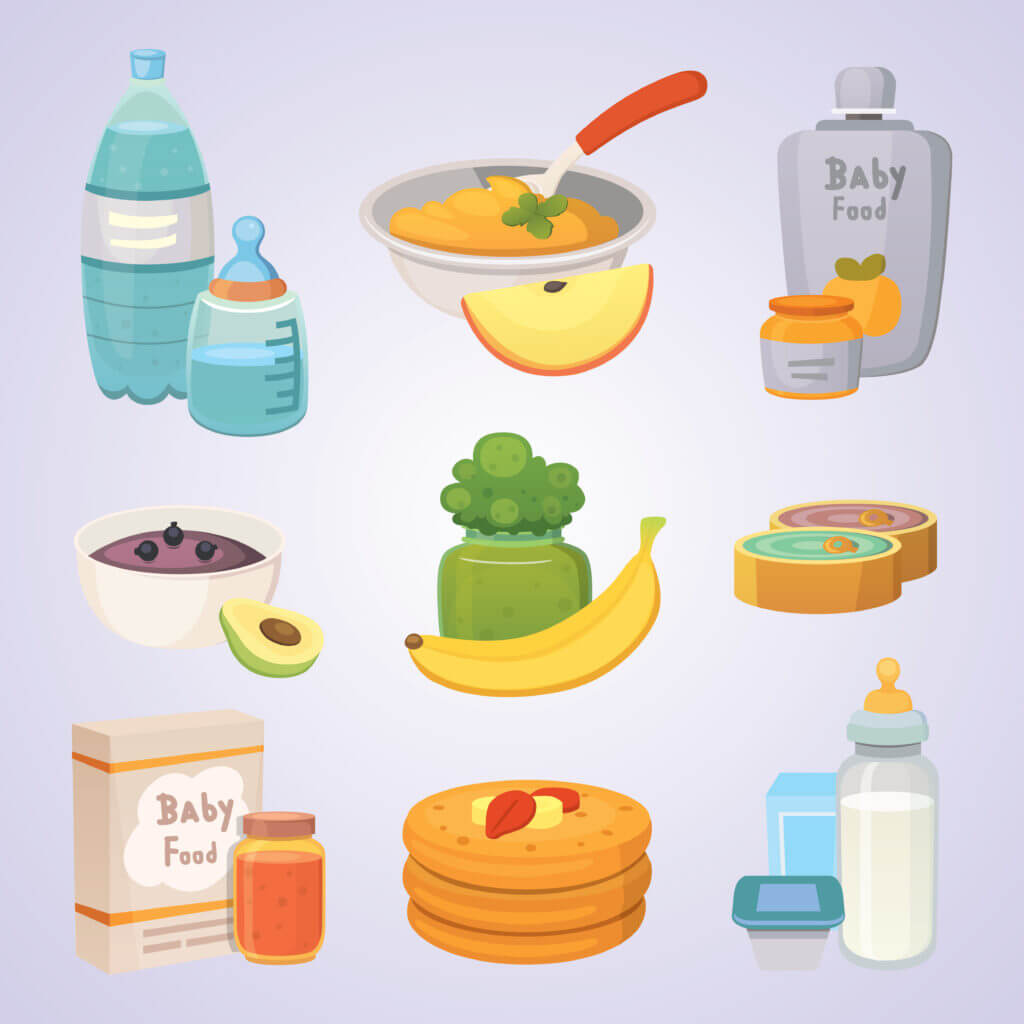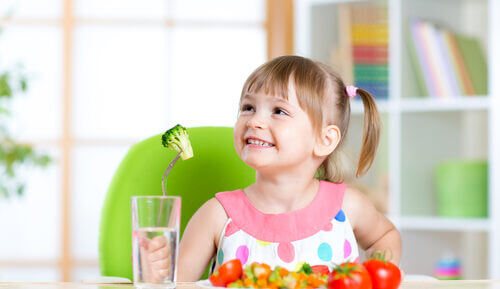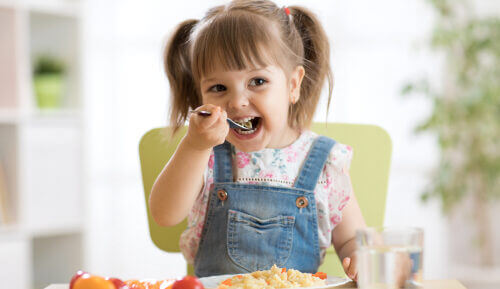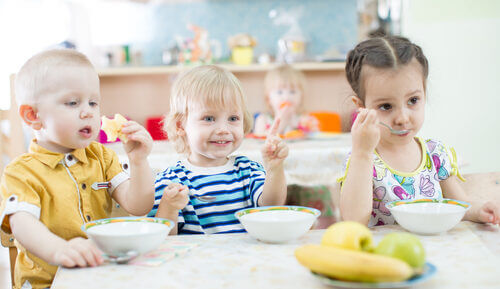
Table of contents
- What age should you start weaning?
- Are there dangers in weaning a baby too early or too late?
- Weaning methods
- Which weaning method is best?
- Are there stages to weaning?
- Weaning foods
- Meal ideas for weaning babies
- What foods should parents avoid when weaning?
- When can children eat the same meals as the rest of the family?
- Allergens
- Portion sizes
- Refusing foods during weaning
- Will my child’s nursery support their weaning?
Table of contents
- What age should you start weaning?
- Are there dangers in weaning a baby too early or too late?
- Weaning methods
- Which weaning method is best?
- Are there stages to weaning?
- Weaning foods
- Meal ideas for weaning babies
- What foods should parents avoid when weaning?
- When can children eat the same meals as the rest of the family?
- Allergens
- Portion sizes
- Refusing foods during weaning
- Will my child’s nursery support their weaning?
Weaning your child and introducing them to solid foods is a huge step in their development. It’s the beginning of a lifelong relationship with food and nutrition.
The process can be overwhelming for parents and advice on weaning has changed over the years.
Every baby is different, and some may find the process more challenging than others. Below is some up-to-date guidance on when to start weaning and what your baby should and shouldn’t eat.
What age should you start weaning?
NHS official advice recommends introducing solid food to babies around six months alongside breast milk or formula. This is when they are likely to be developmentally ready to start exploring food.
However 40% of first-time mums introduce solid food before their babies are five months old, according to research led by the Office for Health Improvement and Disparities (OHID).
Last year, OHID launched a campaign to promote NHS advice on introducing babies to solid food from around six months.
The campaign was backed by Dr Zoe Williams and baby and child nutritionist Charlotte Stirling-Reed. She says: “Some babies may be ready a little earlier than others, but around six months is a good marker of when they are likely to have developed the skills for eating solid foods.”
Three key signs that show a baby is ready to wean include:
- They can sit up (with a little support) and hold their head and neck steady. This allows babies to sit nicely and be able to focus on their hand and arm movement and not focus on holding their trunk up.
- They can see food, pick it up and bring it to their mouth by themselves. This should help them with skills needed for self-feeding and hand-eye coordination.
- Baby should be able to swallow more food than they push out – or have a less intense tongue thrust reflex.
“Ideally, we want to see these signs happening simultaneously before we start offering baby solid foods,” she says.
Are there dangers in weaning a baby too early or too late?
Every child is different and their weaning unique, but there can be dangers to weaning at the wrong time.
Weaning too early, before your child is physically ready, can put your baby at risk of digestive issues and even skin problems.
Introducing solid foods before six months can reduce the amount of breast and formula milk that is being consumed. This can heighten the risk of infectious diseases and mean they may miss out on vital nutrients. In addition, their digestive system is not yet developed to cope with anything other than milk which can lead to weight problems.
Babies will also be more proficient at swallowing at six months reducing the risk of choking.
Leaving weaning too late can also be detrimental and heighten the risk of the child developing allergies to certain foods.
Weaning your baby too late may result in them missing out on important nutrients (especially iron) which need to start coming from foods at around six months of age. Additionally, if baby is showing all the signs of readiness, it’s great to take advantage of that and really help them explore foods and their skills at a time when they are ready to do so. Not doing this might mean they are less receptive to food or less practiced at the skills needed to eat.”
Charlotte Stirling-Read, child nutritionist
Weaning methods
There are two main weaning methods to support children to explore tastes and textures, become confident in eating (building the skills to scoop up food and get it into their mouths can take time and be messy along the way) and get the nutrients they need.
Traditional weaning
Traditional weaning involves spoon-feeding your baby with pureed food, later building up to mashed, then lumpy, then solid foods.
Baby-led weaning
In baby-led weaning, parents provide a variety of foods for their baby to choose from and feed themselves. This could be a selection of finger foods or what the parents are eating.
Which weaning method is best?
Ms Stirling-Reed advises: “To be honest I’m a fan of a BEST OF BOTH approach.
“To me, truly Baby LED weaning is about letting your baby lead that process. Go with the flow with whether they want finger foods or spoon. Giving them the opportunity to explore both during weaning is a good idea. It helps baby to develop a variety of skills and also try a variety of foods too.”

Are there stages to weaning?
Some advice talks about stages of weaning, with babies being expected to eat X foods at Y months olds, but you don’t have to heed this if it doesn’t work for your baby.
Ms Stirling-Reed says: “We used to talk about weaning in “stages”, but the trouble with doing this is that babies all take to weaning at such different paces. Some go right in and self-feed and gobble up finger foods super easily, whereas others are a little slower to take to “eating” and prefer foods off a spoon a little more. Both of these scenarios are fine, expected and common in babies so having “stages” can be unhelpful.
“I do like to talk about babies moving on to more “family style” eating, including more advanced textures, ingredients and meal components at around 10-12 months, but again it’s just a guide and all babies are so different.”
Weaning foods
Once you have started weaning, your baby will gradually progress through new tastes and textures.
Foods should support your child to get a balanced diet while also being manageable for them to eat – they may still be teething and are only beginning to practise chewing and swallowing solid food.
Good foods for weaning babies include:
- Soft (cooked) vegetables and fruit
- Yoghurt and cheese
- Pulses
- Soft meat and fish
- Eggs (see ‘Allergens’ below)
- Toast, rice and potatoes
Meal ideas for weaning babies
There are plenty of weaning recipe books around to give you ideas on what to feed your baby, as well as meal ideas online, including the NHS website.
What foods should parents avoid when weaning?
Some foods should not be offered during the weaning process. Foods that should be avoided include:
- Salty foods are bad for babies’ kidneys.
- Sugary foods are bad for babies’ teeth.
- Some foods have, or can have bacteria in them that can be dangerous for babies, including honey and soft cheese.
- Some foods pose a choking risk, such as round or brittle foods. Find out more and the difference between choking and gagging.
- Caffeine can prevent your baby from absorbing iron properly and affect their sleep, so avoid tea, coffee, cola and chocolate.
Many foods that we eat as adults can be offered to babies, but they might need slight adaptations – depending on how your little one is progressing on their weaning journey, they might need mashing, cooking longer (so they are softer), blending (especially tough meats), chopping up etc.”
Charlotte Stirling-Reed
When can children eat the same meals as the rest of the family?
Ms Stirling-Reed says: “Some babies might eat similar foods to their parents right from the start of weaning. Others will be a little gentler in terms of their weaning progress.
“As I mentioned before, I’m a fan of really focusing baby on family foods from around 9-10 months of age, but some babies might progress quicker than this to “family-style” eating. Foods for babies may well still need adapting a fair amount, and it’s also important not to add salt and sugar to any of baby’s foods.”
Allergens
You may be worried about feeding your baby common allergens, such as eggs, nuts, soya, gluten and shellfish, for fear that they could have a serious allergic reaction.
It can, however, be beneficial to introduce these foods early.
Ms Stirling-Reed states: “Advice on this has changed in recent years and it’s now recommended that allergens are introduced early to babies during the weaning process to actually help prevent an allergy developing in the first place.
“Ideally, allergens should be offered in small amounts and one at a time and as the only new food that day.”
Portion sizes
When you first start weaning, you will be gently transitioning from milk to food, with milk still making up a large part of the baby’s diet to begin with. Your baby doesn’t need to get all their nutrients from solid food, through three square meals a day, from six months old.

Ms Stirling-Reed explains: “At the start of weaning, it’s really important to kick off with just one meal each day. This is because moving onto solid foods is quite a big deal for babies. It’s all very new and takes a lot of skills and energy from them. Offering one meal is great to gently introduce the idea of solid foods.
“Once your baby gets familiar with weaning, you can start building on those meals as they build on their skills and confidence. Babies also don’t have recommended portion sizes, because, just like us as adults they are likely to all have different appetites which will vary from day to day and meal to meal.”
Refusing foods during weaning
It can be disheartening if your child refuses foods, especially if they previously accepted them. Just remember that some foods may take a few tries for them to accept and their appetite, likes and dislikes can change from day to day.
Ms Stirling-Reed explains: “The first thing to know is that babies’ appetites during the entire weaning journey are likely to go up and down. If you can right at the start remember that they will vary and that’s OK. So many different things affect a baby’s appetite and accepting that should hopefully help you stay calmer on the days when nothing gets eaten.
“If food refusal is going on for a while, I do include tips in this course and on my website about what you can do and how you can encourage more food to be explored.”
Will my child’s nursery support their weaning?
Your child’s nursery should support your chosen weaning method, as well as accommodating any dietary needs they have.
Charlotte Stirling-Reed is now running an Online Weaning Course, a complete step-by-step guide for parents and caregivers to introduce solids to their baby. Find out more about the course on her website.


